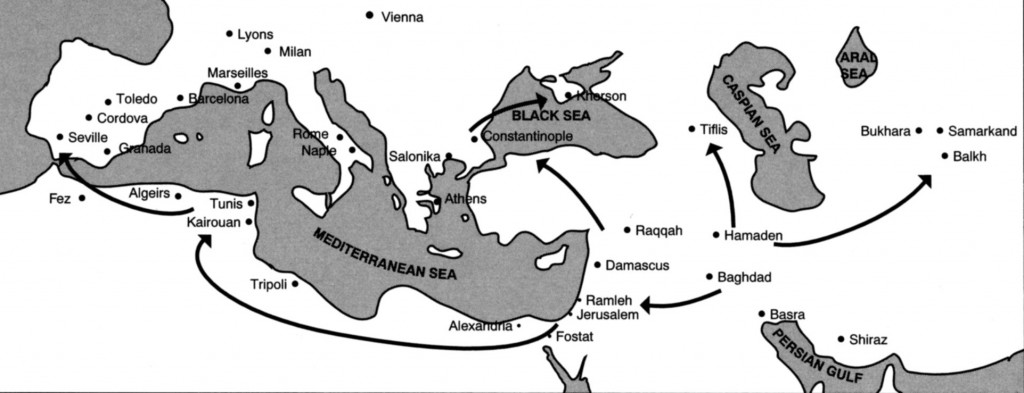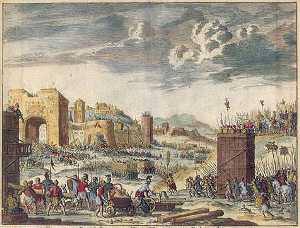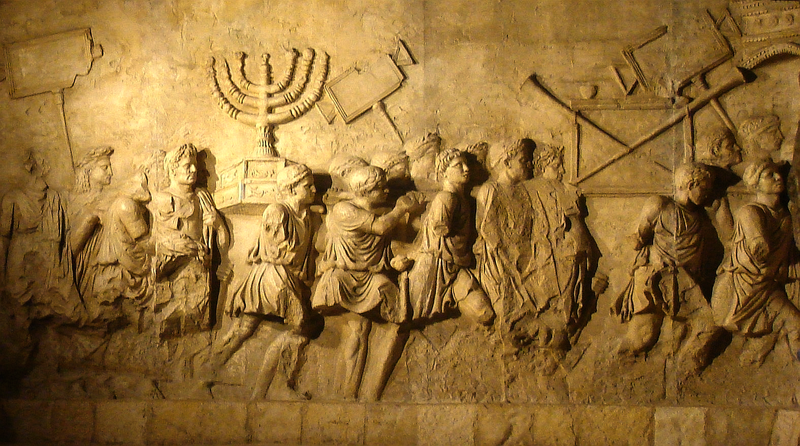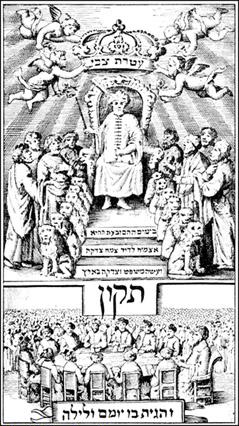Jewish history works in strange and surprising ways. A perfect example is how the Diaspora spread from Babylonia to North Africa and Spain. Oddly enough, it began with a kidnapping.

For centuries, the yeshivas of Babylonia, the birthplace of the Talmud, were the center of Jewish life. At the end of the 8th century, however, they faced a serious economic crisis, as yeshivas are wont to do. They therefore adopted the time-honored formula of sending fundraisers overseas. And because the situation was so desperate, they did not just send out any collectors. They sent the heads of the yeshivas themselves, along with their wives and families. The names of three of them are known to us: Rabbi Shmaryahu, Rabbi Chushiel, and Rabbi Moshe. The fourth man has remained anonymous.
The four great rabbis set out together, but in those times, the Mediterranean was a dangerous place. Aside from the storms and the uncertain fate of ships, pirates abounded. And not only did these pirates look for booty, they looked for people whom they could kidnap and sell on the slave market.
The pirates knew that if they could capture Jews, especially prominent Jews, they could collect a great ransom. Redeeming the kidnapped is one of the primary mitzvos of the Torah. We’re even allowed to sell a Torah scroll to raise money to save a Jew. Jewish law always had its priorities straight. Jews are not museums, not artifacts, and not a culture – we’re people. People have to be saved from kidnappers. A Torah scroll won’t do anyone any good if there are no Jews to learn from it.
Aware of this, the pirates were always on the lookout. They had spies, informers who told them, “This-and-this ship is sailing from this-and-this port with these-and-these people.” The pirates got wind of the fact that there were four great rabbis on this ship, and two or three days out of port, the rabbis were captured.
The rabbis were brought to the slave markets in Alexandria, where Rabbi Shmaryahu was ransomed. But the pirates were unable to get a high enough price for all four rabbis, so the remaining captives were brought west to the slave markets of Tunis and Fez.
Back then, Tunis and Fez were like the Western frontier. There were Jews there, but they were never able to attract great rabbinic leadership. So now they saw a golden opportunity, and they struck a deal. They told the pirates, “Before we bid on the rabbis, we’d like to talk to them.”
Then they made the rabbis an offer. They would ransom them, but they wanted them to stay and build up a thriving Jewish community.
Rabbi Chushiel and his son Rabbi Chananel agreed. Rabbi Moshe was ransomed in Spain, though according to the legend, his wife, unfortunately, threw herself into the Mediterranean and drowned rather than submit to the advances of the pirate leader. The fourth rabbi was sold off in Sicily.
From these rabbis grew strong Jewish communities, and that is how the scene began to shift. As we know from the history of American Jewry, it only takes a few great people to make a difference. The four rabbis built yeshivas, and eventually students emigrated to come and learn with them. They set a standard that changed the entire complexion of Jewish life so that within 50 to 80 years, North African Jewry no longer felt subservient to Babylonian rule. And that is how the west opened up. Jewish history develops through unexpected twists and turns.












